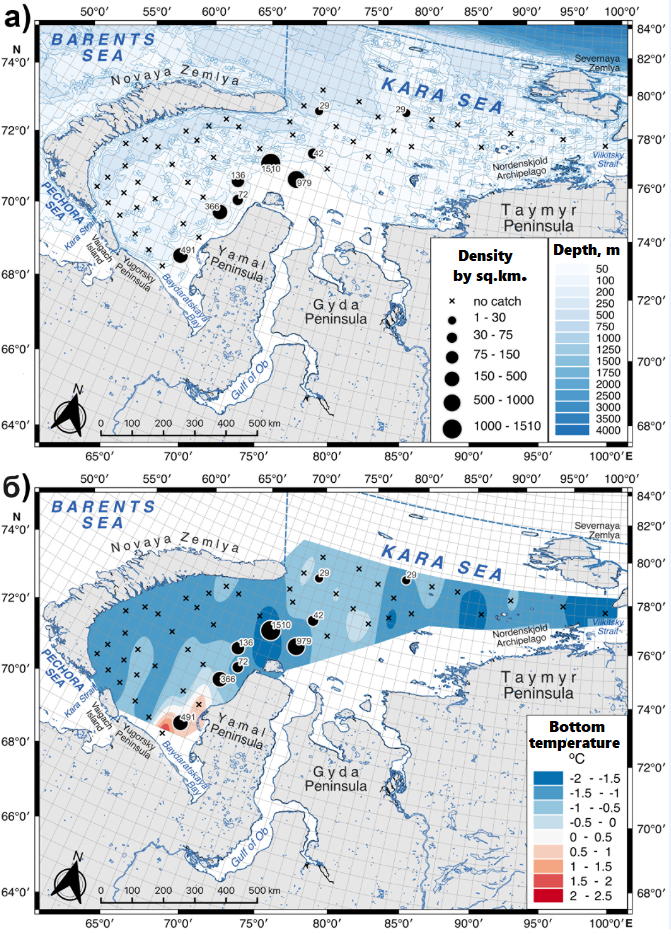
The Arctic alligatorfish Aspidophoroides olrikii is a member of the family Agonidae (Fig. 1) with a nearly circumpolar range. It is found in Arctic waters from the White Sea and the eastern part of the Barents Sea to the Beaufort Sea, in the adjacent North Atlantic off the coasts of western Greenland, the USA and Canada, and in the northern part of the Pacific Ocean from the Bering Strait south to Cape Navarin along the Asian coast and to mouth of the Yukon according to American. Despite its wide geographical distribution and the fact that this species is considered quite common, the available information on its ecology is extremely limited and fragmentary.

Scientists from the P.P. Shirshov Institute of Oceanology RAS, A.N. Severtsov Institute of Ecology and Evolution RAS, the Kamchatka branch of the Pacific Institute of Geography FEB RAS and the All-Russian Research Institute of Fisheries and Oceanography obtained new data on the spatial and vertical distribution, temperature characteristics of the habitat, size-age and size-sex structure, age and growth rate, size and age of puberty, fertility and food composition of the Arctic alligatorfish in the Kara Sea.

Maximum catches of this species were recorded north of the Yamal Peninsula at depths of 18-21 m in the temperature range at the bottom from -1.49 to -0.96°C (Fig. 2). In trawl catches (Fig. 3), individuals aged 2-6 years with a total length of 39-76 mm with a body weight of 0.25-2.91 g were recorded, but fish up to 50 mm in length with a body weight of less than 0.5 g predominated. The proportion of females increased sharply among individuals with a length of more than 68 mm, reaching 100% with a length of over 75 mm. Males and females of the species in question begin to mature in the third year of life at a length of 47-48 mm and 52-58 mm, respectively. Sexual maturity of half of the males and females occurs in the fourth year of life when they reach a length of 52-58 mm and 61-63 mm, respectively. The Arctic alligatorfish is a mesobenthophage, the main food of which is amphipods, which make up about 95% of the diet, but as A. olrikii individuals grow, the number and size of amphipods they consume increases.
Along with other small representatives of the benthic high-latitude ichthyofauna, the Arctic alligatorfish can be considered as an indicator species of the state of Arctic ecosystems. Therefore, obtaining new data on the ecology of such species will not only contribute to a better understanding of the functioning of marine coastal ecosystems at high latitudes, but will also make it possible to monitor their condition in the modern period, characterized by sudden climate changes and increased anthropogenic pressure (shipping, mining, fishing, tourism and etc.).
Article imprint:
Tokranov A.M., Emelin P.O., Orlov A.M. 2024. Armored fish in cold polar waters: new information on the Arctic alligatorfish Aspidophoroides olrikii (Agonidae, Perciformes, Teleostei) from the Kara Sea (Siberian Arctic) // Polar Biology. https://doi.org/10.1007/s00300-024-03280-7
